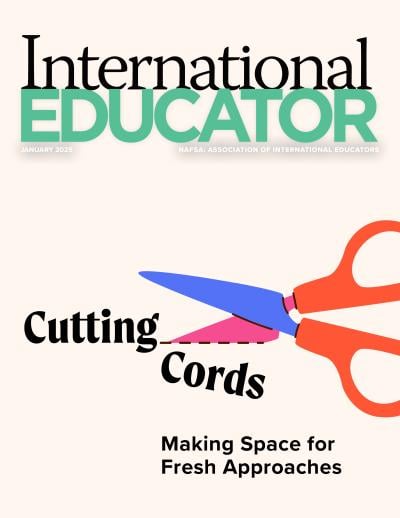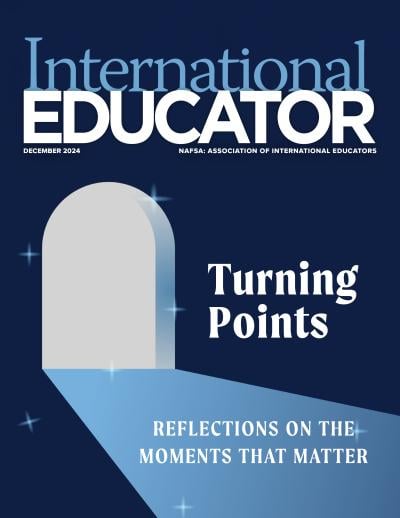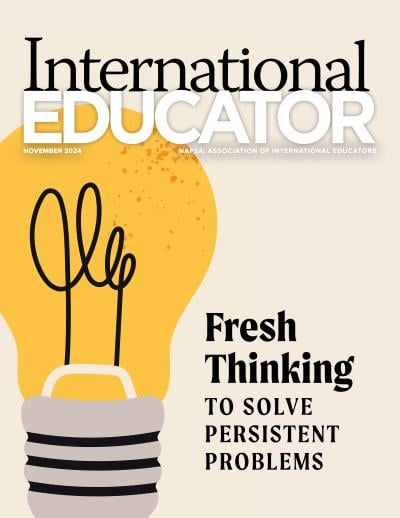Marlene M. Johnson: Reflections on the Past and Present
Serving as NAFSA’s executive director and CEO since 1998, Marlene M. Johnson will be retiring at the end of December 2016 after nearly 20 years of service to NAFSA and the larger international education community. During her tenure, the association’s membership grew from approximately 4,000 members to more than 10,000 and she spearheaded NAFSA’s public policy efforts in areas such as immigration reform and U.S.-Cuba relations.
What do you see as your major accomplishments during your time at NAFSA and what is your proudest achievement?
There are probably three things that are most impactful. One is NAFSA’s public policy profile. The board’s decision to move beyond government relations to a broader public policy role has set NAFSA apart. We have an active Cuba initiative, which I am very proud of, both in terms of our advocacy for lifting the embargo and for our programming to encourage more active partnerships between U.S. and Cuban institutions.
The second one is that we’ve built a cohesive membership and management structure where the role of the members for creating knowledge and connecting us to the field has remained very strong. At the same time, the execution of many of the programs that used to be done exclusively by volunteers is done by staff. And as part of that, we have become a financially independent organization, which allows us to speak honestly on our public policy work.
And thirdly we have developed a very strong relationship with the regulatory side of government agencies, both with the Department of State and with the Department of Homeland Security (DHS). I have served on the DHS Higher Education Academic Advisory Council, which has been a tremendously effective vehicle for NAFSA to advance our own recommendations on regulatory changes.
Where do you see international education heading in the next several years? What are the biggest challenges and opportunities that international educators will face?
One of the big changes that is happening as we speak is the extraordinary growth in student mobility in the world. When I came to NAFSA most of the mobility was coming from other places to the United States and Europe. There was very little mobility within other regions, but today virtually every part of the world is participating in student mobility in both directions.
The other thing that we in the United States have to keep in mind is that right now our international student participation is dominated by five countries. It’s important that U.S. institutions make efforts to diversify the recruiting of students from outside those five countries.
There will also be a continued growth in the acceptance of global learning as a goal for all programs. Mobility is not the goal. The goal is that all of our students have a better understanding of the world and their place in it. That is a huge demand for our faculty because they need to be thinking in new ways about how to introduce those global concepts and other cultural perspectives into the classroom.
One of the things that’s also been exciting to be a part of is the growing role of international education leaders on their campuses. They are playing a much more active role in the broader context of their institution than was true 20 years ago.
What issues should NAFSA and the wider international education community continue to advocate for in the coming years?
It’s really important that NAFSA and all of higher education continue to articulate the importance of being engaged in the world. Higher education leaders and NAFSA as an organization should remind our fellow citizens that openness to the world is an essential part of who we are as Americans. I think it’s also essential that we continue to work hard toward comprehensive, commonsense immigration reform. It says so much about the kind of society we want to be, but this is a difficult moment in history and it’s urgent that higher education and NAFSA be vigilant in staying the course on that issue.
How do you plan to stay connected to the international education field post NAFSA?
I serve on two boards that have an international focus. One of them is the Kakenya Center for Excellence, a school for girls in southern Kenya. The founder, Kakenya Ntaiya, was a speaker at our conference in Los Angeles. It’s a very exciting opportunity for me to work at a different level of building capacity for education for girls. I also am a new member on the board of the Washington Office on Latin America (WOLA), a human rights organization focused on the Western hemisphere. NAFSA has collaborated with WOLA on public policy work.
About International Educator
International Educator is NAFSA’s flagship publication and has been published continually since 1990. As a record of the association and the field of international education, IE includes articles on a variety of topics, trends, and issues facing NAFSA members and their work.
From in-depth features to interviews with thought leaders and columns tailored to NAFSA’s knowledge communities, IE provides must-read context and analysis to those working around the globe to advance international education and exchange.
About NAFSA
NAFSA: Association of International Educators is the world's largest nonprofit association dedicated to international education and exchange. NAFSA serves the needs of more than 10,000 members and international educators worldwide at more than 3,500 institutions, in over 150 countries.
NAFSA membership provides you with unmatched access to best-in-class programs, critical updates, and resources to professionalize your practice. Members gain unrivaled opportunities to partner with experienced international education leaders.











